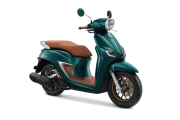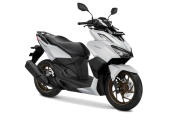Hi, my name is Fiki and I am a professional writer specializing in automotive technology. I have a passion for Honda motorcycles and I want to share my knowledge about the electrical system of Honda motorcycles to help fellow enthusiasts understand more about their bikes. In this article, I will explain the ins and outs of the electrical system of Honda motorcycles, including how it works, common problems, and how to fix them.
- How the Electrical System Works
- Common Electrical Problems
- Diagnosing Electrical Problems
- Fixing Electrical Problems
- Maintenance Tips
- Frequently Asked Questions
- Pros of Honda Electrical System
- Tips for Maintaining Honda Electrical System
How the Electrical System Works
The electrical system of a Honda motorcycle consists of the battery, alternator, voltage regulator, starter motor, ignition coil, and wiring. The battery provides power to the starter motor and ignition system, while the alternator generates electricity to charge the battery and power the electrical components of the motorcycle.
The voltage regulator regulates the output of the alternator and prevents the battery from being overcharged. The ignition coil generates the spark that ignites the fuel in the combustion chamber, while the wiring connects all the electrical components together.
Common Electrical Problems
There are several common electrical problems that Honda motorcycle owners may encounter. These include:
- Dead battery
- Starter motor failure
- Charging system failure
- Ignition system failure
- Faulty wiring
- Blown fuses
- Broken switches
- Burnt-out bulbs
Diagnosing Electrical Problems
Diagnosing electrical problems on a Honda motorcycle can be tricky, but there are a few steps you can take to identify the problem:
- Check the battery voltage with a voltmeter
- Inspect the wiring for any signs of damage or loose connections
- Test the starter motor and charging system with a multimeter
- Check the ignition system for spark
- Replace any blown fuses or burnt-out bulbs
- Test the switches for continuity
Fixing Electrical Problems
Fixing electrical problems on a Honda motorcycle requires some basic knowledge of electrical systems and a few tools. Here are some common fixes:
- Replacing a dead battery
- Replacing a faulty starter motor or alternator
- Replacing a faulty voltage regulator
- Replacing a faulty ignition coil
- Repairing or replacing faulty wiring
- Replacing blown fuses or burnt-out bulbs
- Replacing broken switches
Maintenance Tips
Maintaining the electrical system of your Honda motorcycle is essential to ensure it runs smoothly and safely. Here are some tips:
- Check the battery voltage regularly
- Clean the battery terminals and connections
- Check the wiring for any signs of damage or wear
- Check the alternator output regularly
- Replace any faulty components immediately
- Keep the electrical system dry and clean
- Use high-quality replacement parts
Frequently Asked Questions
- What causes a dead battery?
A dead battery can be caused by a faulty alternator, a loose connection, or leaving the lights on for too long. - How do I test the alternator?
You can test the alternator with a multimeter by checking the output voltage at the battery terminals while the engine is running. - What causes a blown fuse?
A blown fuse can be caused by a short circuit or an overload in the electrical system. - How often should I check the battery voltage?
You should check the battery voltage at least once a month or before any long rides. - What type of battery should I use for my Honda motorcycle?
You should use a high-quality, maintenance-free battery that is recommended by Honda. - What should I do if my motorcycle won’t start?
Check the battery voltage, inspect the wiring, and test the starter motor and ignition system. - How do I replace a burnt-out bulb?
Consult your owner’s manual for instructions on how to replace bulbs on your specific Honda motorcycle model. - What should I do if my motorcycle’s electrical system fails while riding?
Pull over to a safe location and inspect the system for any signs of damage or failure. If necessary, call for roadside assistance.
Pros of Honda Electrical System
The electrical system of Honda motorcycles is known for its reliability and durability. Honda uses high-quality components that are designed to last for many years. In addition, Honda motorcycles are equipped with advanced electrical features such as fuel injection, digital displays, and LED lighting.
Tips for Maintaining Honda Electrical System
Here are some additional tips for maintaining the electrical system of your Honda motorcycle:
- Store your motorcycle in a dry, cool place
- Use a battery tender to keep the battery charged
- Check the wiring for any signs of corrosion or damage
- Keep the electrical connections clean and tight
- Replace any faulty components immediately
- Have your motorcycle serviced regularly by a qualified mechanic
Summary
The electrical system of a Honda motorcycle is a complex but essential component that powers the bike’s ignition, lighting, and other electrical features. By understanding how the system works, common problems, and how to fix them, you can keep your Honda motorcycle running smoothly and safely for many years to come.










